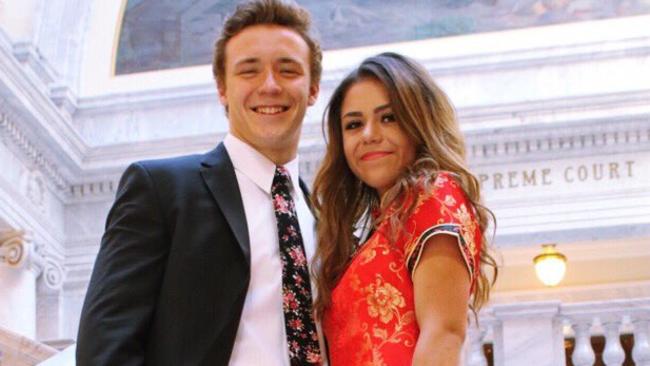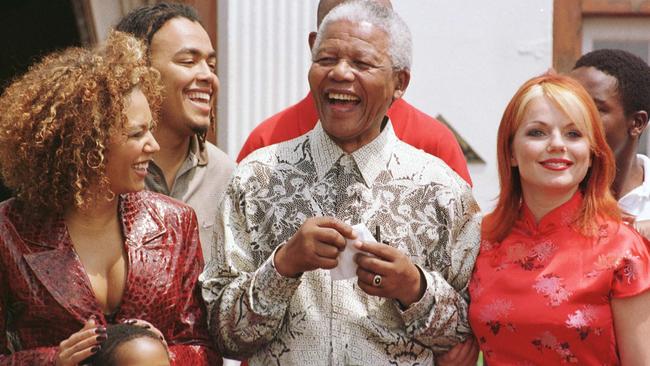This isn’t a hate crime, it’s just a pretty dress
THOSE who attacked a teenager for wearing a Chinese-inspired dress should read up on the garment’s history, because one place it actually hasn’t caused offence is China, writes Bianca O’Neill.

Rendezview
Don't miss out on the headlines from Rendezview. Followed categories will be added to My News.
THE PC warriors are at it again.
Last week, their latest target was a teenager in Utah who chose to wear a traditional Chinese-inspired dress to her prom.
Keziah Daum was promptly retweeted by Jeremy Lam, who declared “My culture is NOT your goddamn prom dress.” More than 41,000 retweets followed, causing Twitter to light up with bullying and abusive commentary informing the poor teenager that she was culturally appropriating Chinese culture. Yep, by wearing a dress.
PROM pic.twitter.com/gsJ0LtsCmP
— Keziah (@daumkeziah) April 22, 2018
For context, let’s talk about the dress she was wearing. The qipao, as it is called in Mandarin — also known as the cheongsam in Cantonese — gained wider popularity in the 1920s after it was adopted by the majority Han Chinese women, following many years as a garment exclusively worn by the upper classes of the Qing dynasty. Although it has historical significance, it isn’t a piece of religious or ceremonial garb. The garment has evolved over time, as has its place in Chinese culture, and now it is for special occasion wear, and can be worn by anyone.
My culture is NOT your goddamn prom dress. https://t.co/vhkNOPevKD
— Jeremy Lam (@jere_bare) April 27, 2018
Yes, it has some cultural significance as a piece of clothing that was reclaimed by the working classes — but after almost 100 years, it has found new meaning as a pretty standard piece of formal wear. To be worn at a prom, for example …
In 1985, Pierre Cardin introduced the fashion world to Chinese culture, and was said to be inspired by the cheongsam specifically. Many western starlets have since brought the garment to life on Hollywood red carpets, including Elizabeth Taylor, Nicole Kidman, Paris Hilton, Emma Watson, and Celine Dion.
In the 90s, it was the height of fashion — I remember a lot of prom dresses, worn by white women, inspired by the cheongsam. Rachel wore one in Friends. Geri Halliwell brought some qipao flavour to the Spice Girls. And yet, not a peep from the peanut gallery.

In 2018, however? 41,000 tweets, and the extensive bullying of a teenager.
In case you’re wondering what Chinese people think of this storm in a teacup, well, it’s just that. A storm in a teacup.
“It’s ridiculous to criticise this as cultural appropriation,” Zhou Yijun, a Hong Kong-based commentator told the New York Times. “From the perspective of a Chinese person, if a foreign woman wears a qipao and thinks she looks pretty, then why shouldn’t she wear it?”
Hung Huang, a fashion blogger and TV host based in Beijing, echoed this response in a similar interview: “To Chinese, it’s not sacred and it’s not that meaningful. Nowadays, if you see a woman wearing a qipao, she’s probably a waitress in a restaurant or a bride.”
Many calls of cultural appropriation appeared to come from Chinese Americans, who pointed out their own personal struggles as Chinese within a white culture. However, the issues they describe are just plain racism — which we should condemn, every time.

But experiencing racism in your personal life does not make a white teenager wearing a qipao cultural appropriation.
And on that note, I think it’s time to define, once and for all, what exactly cultural appropriation actually is.
First of all, it’s being disrespectful to the original use of a garment (which she isn’t here). It’s using directly replicated religious or ceremonial garb as fashion, thereby removing the deeply important meanings attached.
It’s the adoption of elements of a minority culture by a dominant culture (often attached to colonial overtones and an imbalance of power.) Bar Hong Kong, China is most definitely not a colonial culture — and in 2018, it’s hard to argue that the Chinese culture could be named as a minority or as an underdog power player.
How are we meant to live in a multicultural society if we never acknowledge other cultures, or absorb them, in some way, into a fusion of ideas?
How can any modern culture stay entirely true to their history, or pure in cultural reference, and still move forward in a modern way? And why would we want a ‘pure’ culture? Isn’t that, in itself, toeing the line of ethnic purity — and all the terrible ramifications that come with it?
Cultural exchange should be rigorously defended at all costs. True cultural appropriation, however, should not.
Bianca O’Neill is a fashion writer and blogger.
Originally published as This isn’t a hate crime, it’s just a pretty dress


